
Hay-on-Wye, often abbreviated to just "Hay" is a small market town and community in the historic county of Brecknockshire (Breconshire) in Wales, currently administered as part of the unitary authority of Powys. With over twenty bookshops, it is often described as "the town of books", and is both the National Book Town of Wales and the site of the annual Hay Festival.
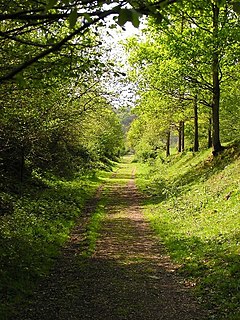
The Wye Valley Walk is a long distance footpath in Wales and England following the course of the River Wye.

The River Wye is the fourth-longest river in the UK, stretching some 250 kilometres from its source on Plynlimon in mid Wales to the Severn estuary. For much of its length the river forms part of the border between England and Wales. The Wye Valley is an Area of Outstanding Natural Beauty. The Wye is important for nature conservation and recreation but is severely impacted by pollution.
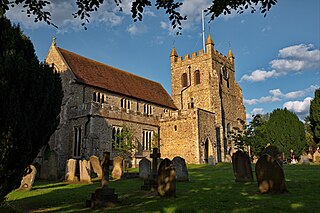
Wye is an historic village in Kent, England, centred 12 miles (19 km) from Canterbury, and is also the main village in the civil parish of Wye with Hinxhill. The population of the ward was 2,282 in 2011. It was home to London University's agricultural college until 2009, which was internationally famous for developing new varieties of hops such as Wye Challenger. In March 2013 the village was voted 3rd best place to live in the UK by The Sunday Times.
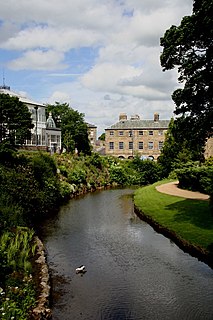
The River Wye is a limestone river in the Peak District of Derbyshire, England. It is 22 miles in length, and is one of the major tributaries of the River Derwent, which flows into the River Trent, and ultimately into the Humber and the North Sea.

Ross-on-Wye is a market town with a population of 10,700, in south eastern Herefordshire, England, on the River Wye, and on the northern edge of the Forest of Dean.

In railroad structures, and rail terminology, a wye or triangular junction is a triangular joining arrangement of three rail lines with a railroad switch at each corner connecting to each incoming line. A turning wye is a specific case.
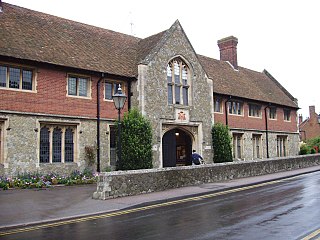
The College of St Gregory and St Martin at Wye, more commonly known as Wye College, was an educational institution in the small village of Wye, Kent, England, 60 miles (100 km) east of London in the North Downs area.

The Wye Oak was the largest white oak tree in the United States and the State Tree of Maryland from 1941 until its demise in 2002. Wye Oak State Park preserves the site where the revered tree stood for more than 400 years in the town of Wye Mills, Talbot County, Maryland.
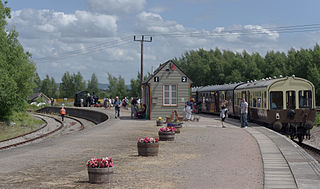
Lydney Junction railway station is a railway station near Lydney in Gloucestershire. The station is now the southern terminus of the Dean Forest Railway. It is located to the south of Lydney, near the A48 road.
The Wye River is a 16.3-mile-long (26.2 km) tributary of the Chesapeake Bay, on the Eastern Shore of Maryland. It was named by the Lloyd family, Edward Lloyd (delegate), and Edward Lloyd, after the River Wye in the United Kingdom. It falls within Queen Anne's County and Talbot County, and joins the Miles River near its mouth to the Eastern Bay. The river is popular with recreational boaters because of its secluded anchorages, fishing, crabbing and proximity to the tourist attractions of St. Michaels, Maryland. Like many rivers on the Chesapeake Bay, the Wye is largely tidal. The river's features include the 2,800-acre (11 km2) Wye Island, most of which is part of the Wye Island Natural Resources Management Area, managed by the Maryland Department of Natural Resources State Forest and Park Service. William Paca, the third governor of Maryland and a signatory to the Declaration of Independence, once owned the island.
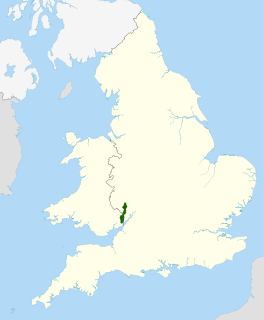
The Wye Valley Area of Outstanding Natural Beauty is an internationally important protected landscape straddling the border between England and Wales. It is one of the most dramatic and scenic landscapes in Britain.

The A466, also known as the Wye Valley Road, is a road from Hereford, England to Chepstow, Wales via Monmouth, Tintern and the Wye Valley.

The Wye Marsh is a wetland area on the south shores of Georgian Bay in Ontario, Canada. The Wye Marsh National Wildlife Area was established on the location in 1978. It is designated a Provincially Significant Wetland by the Ontario Ministry of Natural Resources.

Newbridge-on-Wye is a small village in Powys, Wales. It lies, as its name suggests, on the River Wye, just downstream from the market town of Rhayader, and in the community of Llanyre.

The Wye Valley Railway was a standard gauge railway that ran for nearly 15 miles (24 km) along the Lower Wye Valley between the towns of Chepstow and Monmouth, crossing several times between Wales and England. Opened on 1 November 1876, it was leased to, and worked by, the Great Western Railway (GWR), before being fully absorbed by the GWR in 1905.
Tidenham Station was the station for the village of Tidenham on the former Wye Valley Railway. It was opened in 1876 during the construction of the line and closed on 5 January 1959 following the closure of the line to passenger services. The next station on the line was Netherhope Halt.

The Hereford, Ross and Gloucester Railway, was a railway which ran for 22 1⁄2 miles (36.2 km) linking Hereford and Gloucester via Ross-on-Wye. It was opened on 1 June 1855 as a 7 ft 1⁄4 in broad gauge line, it was amalgamated with the Great Western Railway in 1862. In 1869 the railway was converted to 4 ft 8 1⁄2 in standard gauge. The railway was closed to passengers on 2 November 1964, freight services between Ross-on-Wye railway station and Grange Court railway station continued on until 1 November 1965.
Lydbrook Junction railway station is a disused railway station in England opened by the Ross and Monmouth Railway in 1873, it remained open for 91 years until 1964 when the line finally closed to freight, though passenger services ceased in 1959. The station was constructed in the hamlet of Stowfield approximately half a mile from Lydbrook and its viaduct on the Severn and Wye Railway. It was located approximately 4 miles and 34 chains along the railway from Ross-on-Wye station. In 1874 the Severn and Wye Railway opened a branch from Serridge Junction and Cinderford, passenger services commenced in 1875. All passenger trains along the S&W branch were withdrawn from 1929.

Wye School is a mixed free school based in Wye, Kent, England.


















